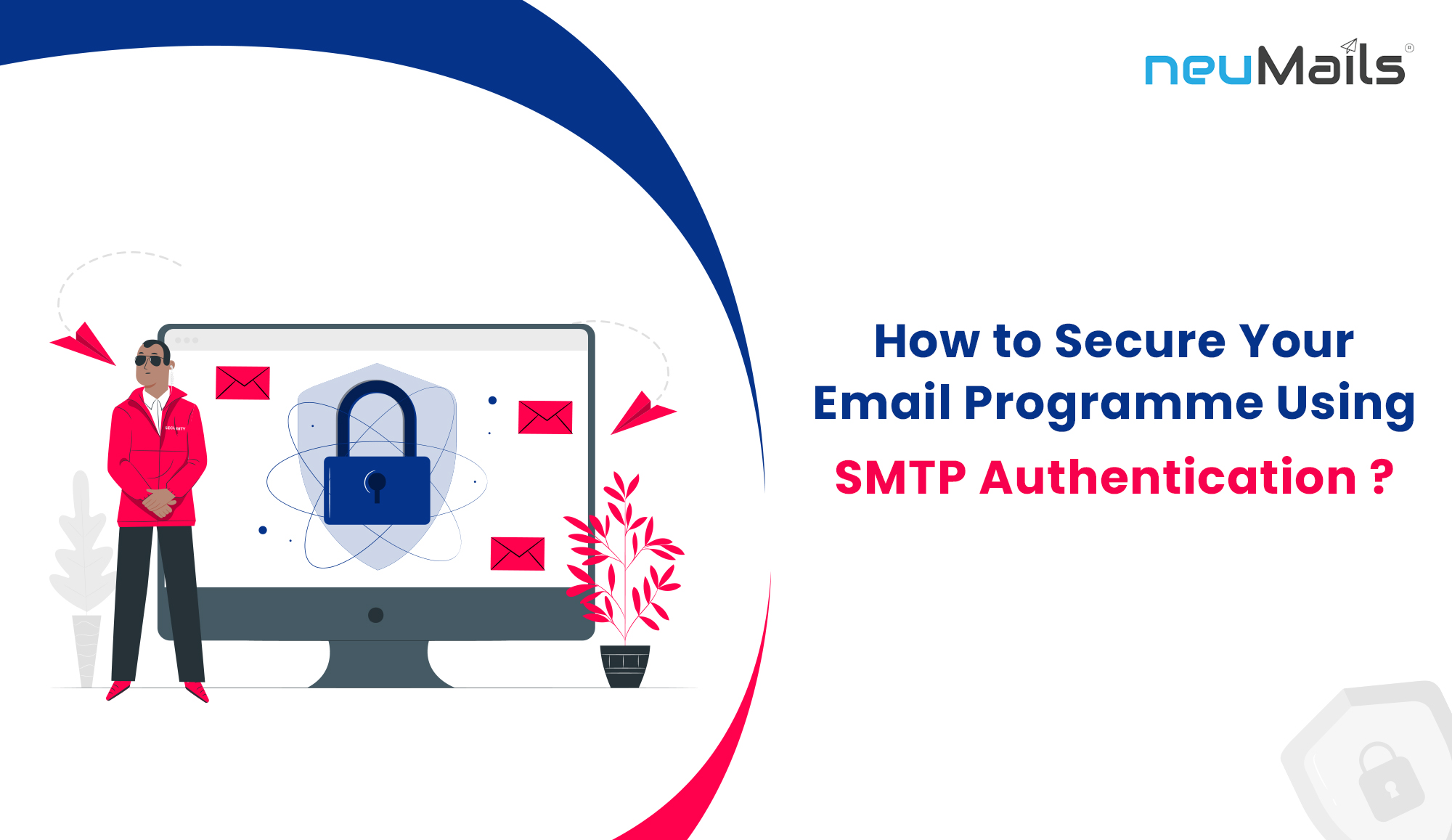Email continues to be a popular method of communication for both individuals and businesses in the current digital era. To safeguard your email program, it’s essential to understand and implement robust security measures. One such critical component is SMTP (Simple Mail Transfer Protocol) authentication.
TABLE OF CONTENTS
In this comprehensive guide, we will explore how to secure your email program using SMTP authentication.
Secure Your Email Security Using Following Methods
- Understanding the Basics of SMTP Authentication
SMTP authentication is the process of validating the identity of the sender before allowing them to send emails through an email server. It ensures that only authorized users can send emails using your domain, reducing the risk of unauthorized email activity.
- Enabling DMARC (Domain-based Message Authentication, Reporting, and Conformance)
DMARC combines SPF and DKIM to provide comprehensive email authentication. It allows you to set policies for handling emails that fail authentication checks. Furthermore, it provides valuable reporting on email delivery and authentication failures, helping you monitor your email program’s security.
- Implement SPF (Sender Policy Framework) Effectively
SPF is a widely recognized email authentication protocol. It helps prevent email spoofing by specifying which mail servers are authorized to send emails on behalf of your domain. Proper SPF configuration boosts your email program’s security and delivery rates.
- Embrace DKIM (DomainKeys Identified Mail)
DKIM is another essential authentication technique. It involves adding a digital signature to your outgoing emails and verifying their authenticity. This signature assures recipients that the email indeed originated from your domain, mitigating the risk of phishing and spoofing attacks.
- Stay Updated with the Latest SMTP Authentication Protocols
The world of email security is constantly evolving. Stay updated with the latest SMTP authentication protocols and standards, as cyber threats are continually changing dynamics of cubersecurity. Consider embracing emerging technologies like BIMI (Brand Indicators for Message Identification) to enhance your email program’s trustworthiness.
- Regularly Monitor Authentication Logs
Monitoring authentication logs is crucial to detect any suspicious or unauthorized email activity promptly. Automated tools can help you keep an eye on authentication failures and potential security breaches.
- Educate Your Team
Human error remains a significant vulnerability in email security. Educate your team on best practices, such as recognizing phishing attempts and avoiding suspicious email links or attachments. Regular training sessions can significantly reduce the risk of email-related security incidents.
- Conduct Regular Security Audits
Periodic security audits are essential to evaluate your email program’s overall security posture. Identify vulnerabilities, assess the effectiveness of your authentication measures, and make necessary improvements to stay ahead of potential threats.
- Engage in Ongoing Optimization
Email security is an ongoing process. Regularly review and optimize your SMTP authentication settings, policies, and procedures to adapt to changing security landscapes.
Summing Up!
In conclusion, securing your email program using SMTP authentication is a critical step in protecting your organization’s digital assets and maintaining trust with your audience. By understanding and implementing these essential security measures, you can protect your email against evolving cyber threats. With NeuMails and GoDMARC we ensure the safe and reliable delivery of your messages. Stay informed, stay secure, and prioritize bulk email security in your digital communication strategy with the best customized Neumails packages.
FAQs
Q1. What are some common authentication methods within SMTP?
A. Common SMTP authentication methods include SPF (Sender Policy Framework), DKIM (DomainKeys Identified Mail), and DMARC (Domain-based Message Authentication, Reporting, and Conformance). These methods help verify the authenticity of emails and prevent email spoofing and phishing attacks.
Q2. How does SPF (Sender Policy Framework) enhance email security?
A. SPF specifies which mail servers are authorized to send emails on behalf of your domain. By setting up SPF records, you can prevent email spoofing and unauthorized email activity, ensuring that only legitimate email servers can send emails using your domain.
Q3. What is DKIM (DomainKeys Identified Mail), and how does it work?
A. DKIM involves adding a digital signature to outgoing emails. This signature is verified by the recipient’s email server, confirming that the email indeed originated from your domain. DKIM helps prevent email forgery and enhances email trustworthiness.

